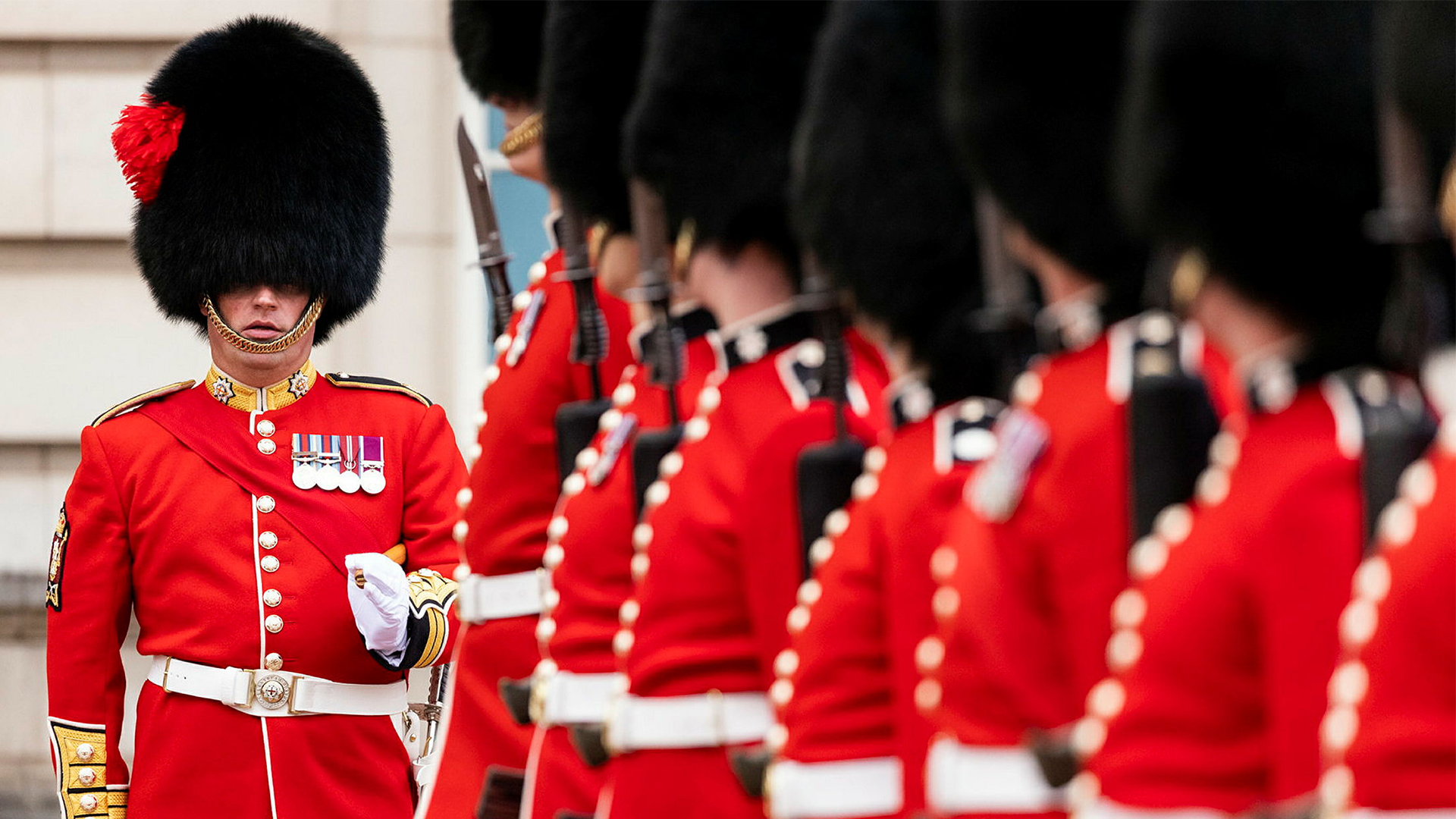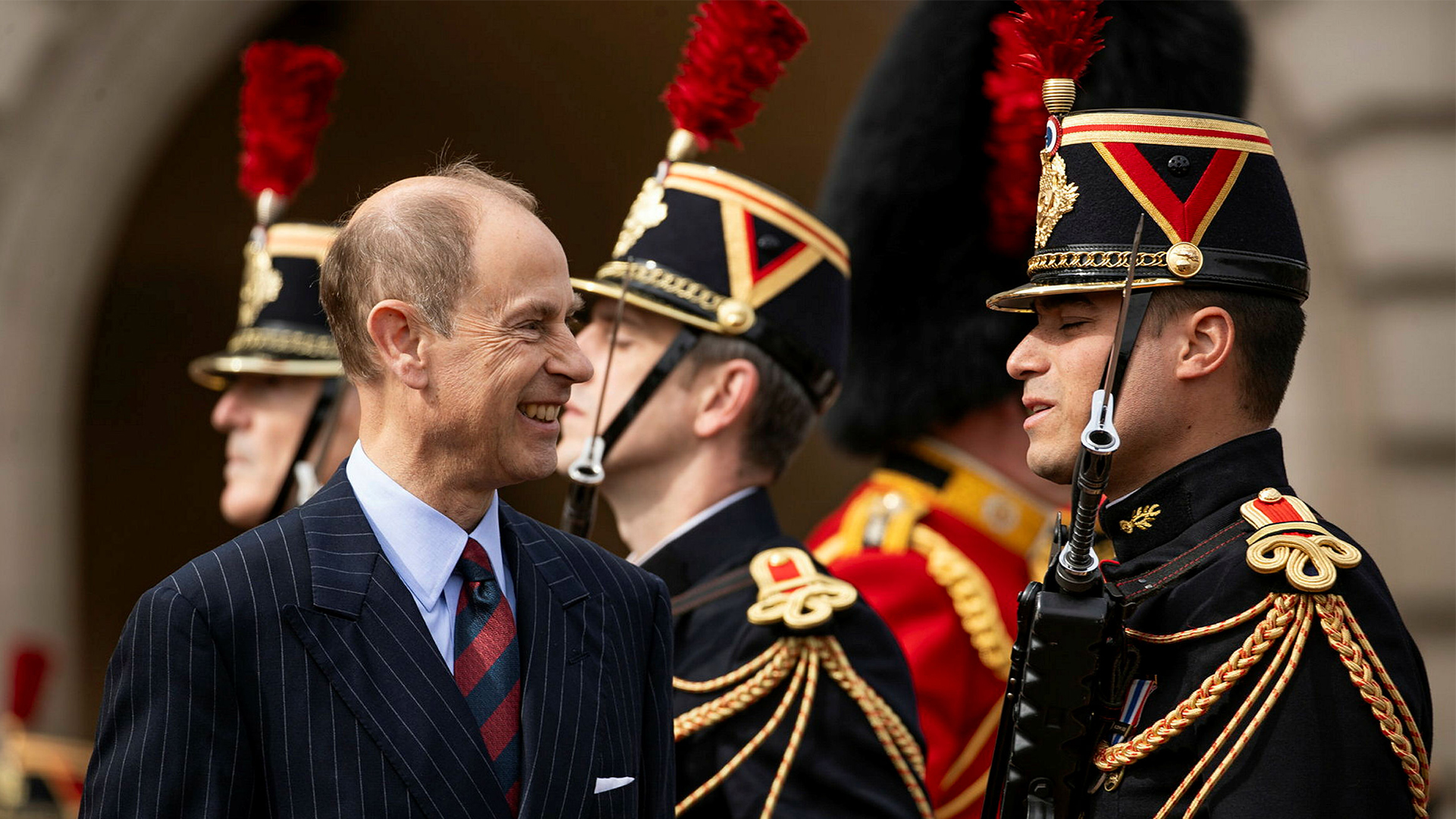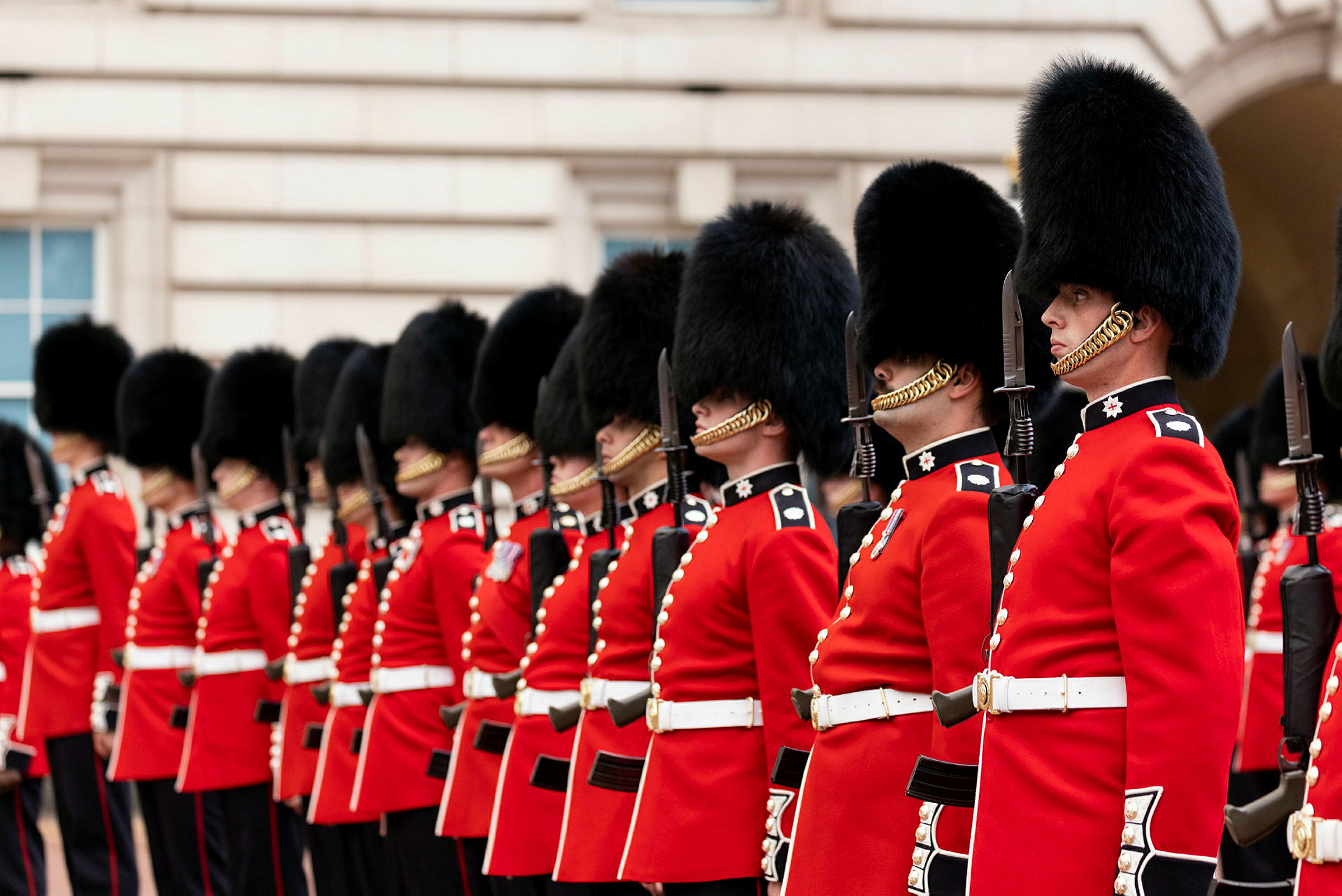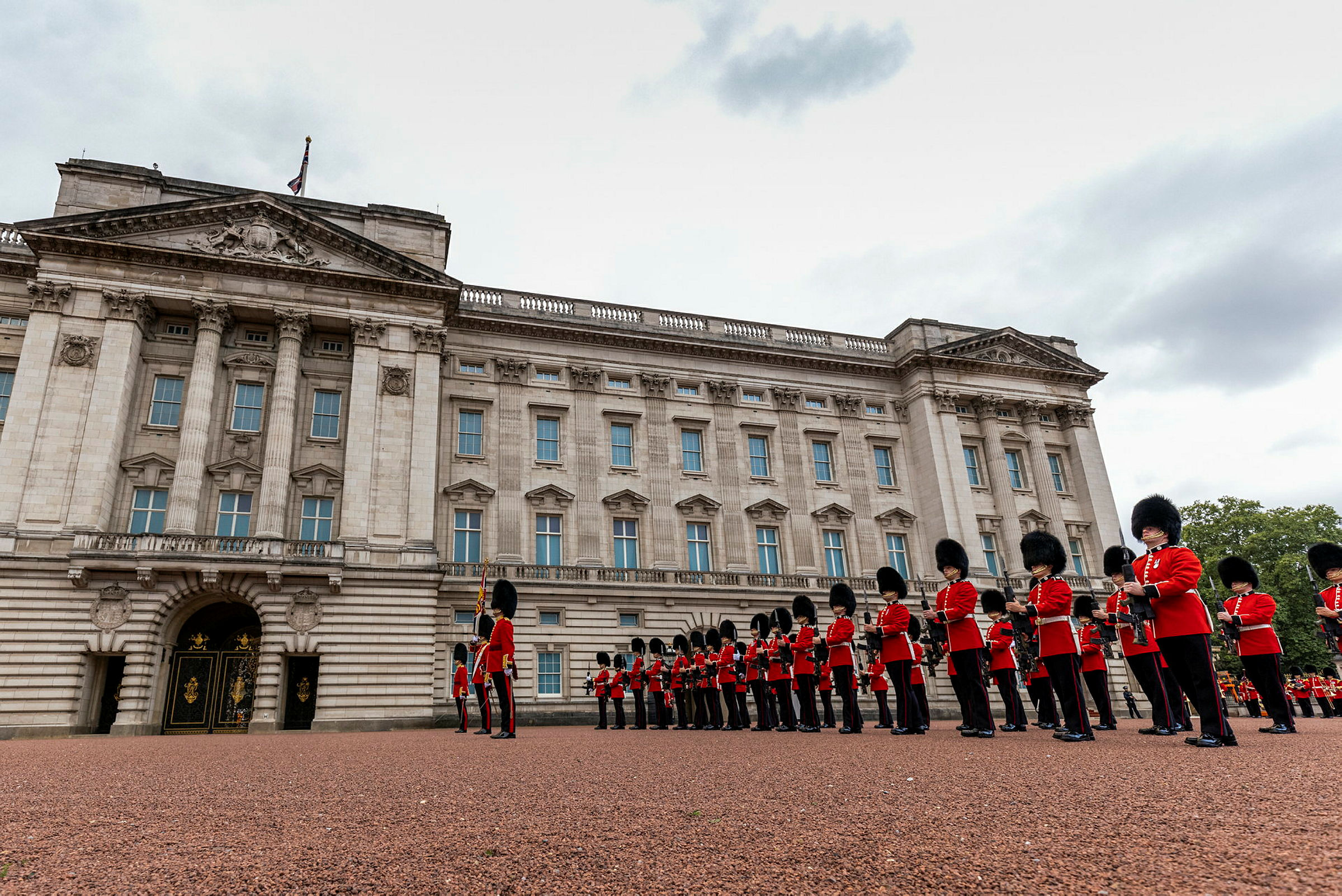
Kings, queens, troops and tourists: What is the Changing of the Guard?

Members of the Ukrainian armed forces have become the latest to take part in the Changing of the Guard ceremony outside Buckingham Palace.
The Ukrainian Naval Band performed alongside the Band of the Scots Guards outside Buckingham Palace during the Changing of the Guard to mark Ukrainian Independence Day.
In a celebration of the bonds that unite Ukraine with the United Kingdom, the bands marched together from Wellington Barracks to Buckingham Palace, before playing alongside each other.
What is the Changing of the Guard?
The ceremony, which is officially known as Guard Mounting, dates back to 1656 and represents a formal handover of responsibilities for palace security.
It originally took place at the Palace of Whitehall, which was the Sovereign's official residence in London until 1689. When the Court moved to St James's Palace, the ceremony took place there.
After Queen Victoria moved into Buckingham Palace in 1837, The Queen's Guard remained at nearby St James's Palace, with a detachment guarding Buckingham Palace, as it still does today.
Today, the main ceremony is conducted at Buckingham Palace.
The strength of the Guard is governed by the monarch's presence. If the Royal Standard is flying above the palace, the King is in residence and the number of sentries is increased.
When the King is in residence, there are four sentries at the front of the building and when he is away there are two.
What happens during the ceremony at Buckingham Palace?
The soldiers who are on duty, known as the Old Guard, form up in front of Buckingham Palace.
They are then relieved by the New Guard who arrive after marching from Wellington Barracks, located in nearby Birdcage Walk, to the palace.
They are accompanied by a band or corps of drums, who play a selection of music ranging from traditional marches to songs from musicals and even familiar pop songs.
The ceremony represents a formal handover of responsibilities.
Changing of the Guard takes place in the forecourt of Buckingham Palace at 11:00 and lasts about 30 minutes. There is no Guard Mounting in very wet weather.

Ceremonial duties at Buckingham Palace, St James's Palace and the Tower of London now take place on Mondays, Wednesdays, Fridays and Sundays.
The Changing of the Guard at Windsor Castle takes place on Tuesdays, Thursdays and Saturdays.
The Changing of the King's Life Guard at Horse Guards Parade by the Household Cavalry takes place on Mondays, Wednesdays and Fridays.
Which military personnel are involved?
The King's Guard is normally provided by one of the five regiments of Foot Guards from the Household Division – the Grenadier Guards, the Coldstream Guards, the Scots Guards, the Irish Guards and the Welsh Guards.
The Household Division of the Army also carries out other ceremonial such as Trooping the Colour and the State Opening of Parliament.
If these regiments have operational commitments, other units, such as the Brigade of Gurkhas, may also take part.

Uniforms
The Foot Guards take part in the ceremony in full dress uniform with their traditional red tunics and bearskin caps.
The uniforms of the Foot Guards may appear the same, but there are subtle differences with the colour and placing of the plume on the bearskin, as well as the spacing of the buttons on the tunic and the badges on the collar and shoulder.
The bearskins, which are made from Canadian black bear fur, are 11 inches (280mm) tall at the front, 16 inches (410mm) at the back and weigh 1.5lb (0.68kg).
The British Army is believed to buy between 50 and 100 bearskin caps each year, costing about £650 each.
How the ceremony at Buckingham Palace goes
10:30: A detachment of the Old Guard forms up in Friary Court in St James's Palace and is inspected by the Captain of The King's Guard.
The contingent then marches down The Mall towards Buckingham Palace preceded by a band.
At Buckingham Palace, the detachment of the Old Guard forms up in the forecourt and is also inspected.
10:43: The St James's Palace detachment enters the forecourt of Buckingham Palace, taking up position beside the Buckingham Palace detachment on the south side of the forecourt.
The Old Guard then awaits the arrival of the New Guard from Wellington Barracks.
After being inspected, the New Guard and band march towards Buckingham Palace, entering the forecourt at about 11:00.

11:00: The New Guard marches in front of the band and halts to face the Old Guard.
At this point, the band plays the New Guard's regimental slow march as it advances towards the Old Guard.
Both the Old Guard and New Guard salute with their SA80 L85 rifles, known as presenting arms, and the Captain of the Old Guard hands over the keys to the palace.
This is a symbolic gesture representing the transfer of responsibility for the security of the palace.
Cover image: The Changing of the Guard ceremony returns to Buckingham Palace (Picture: MOD).









